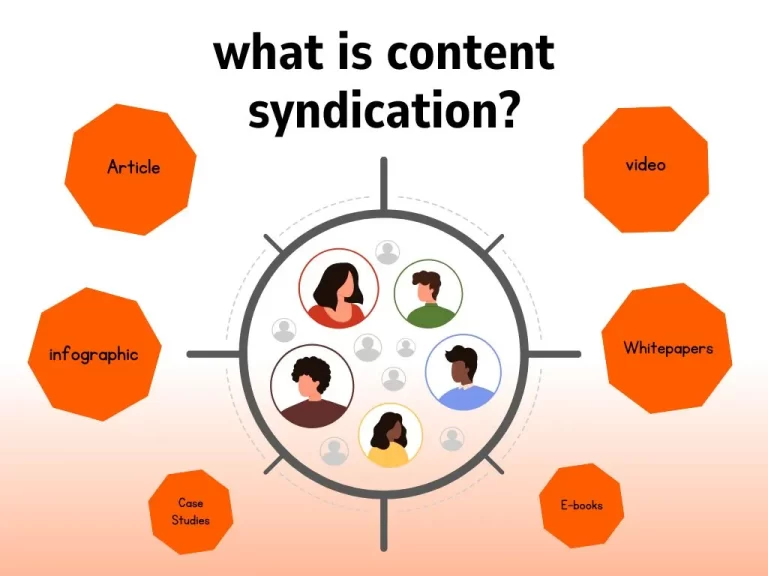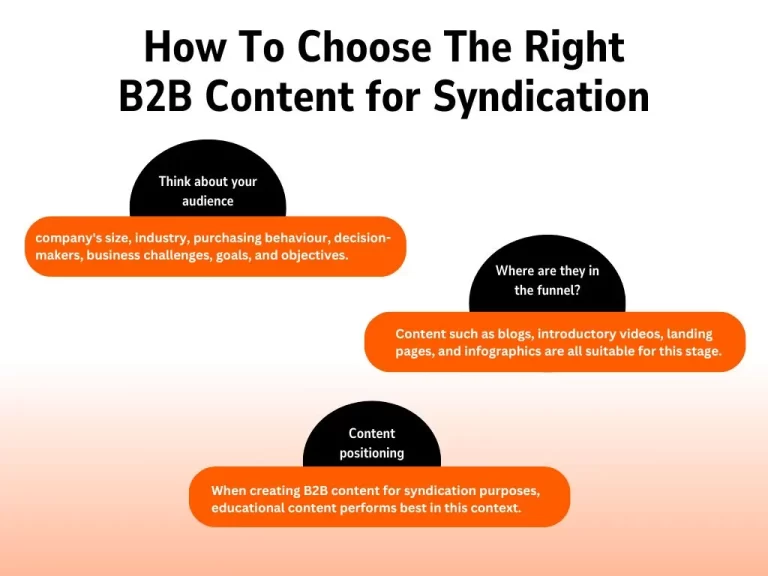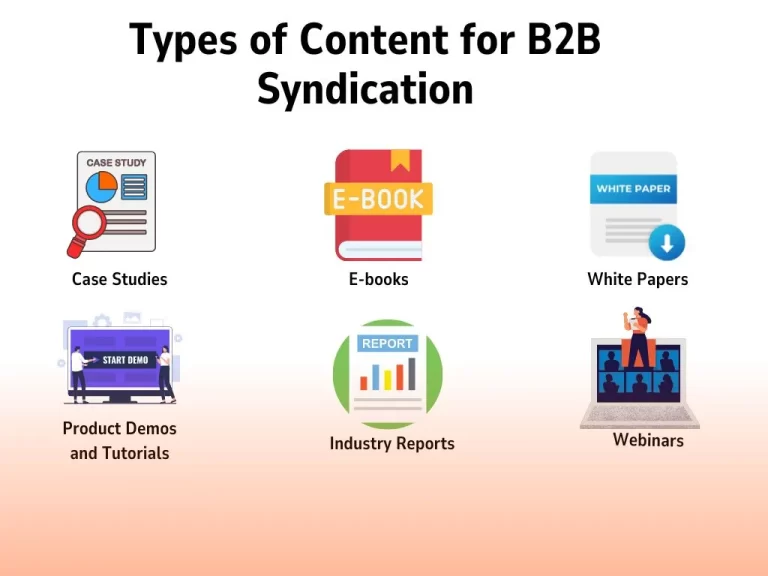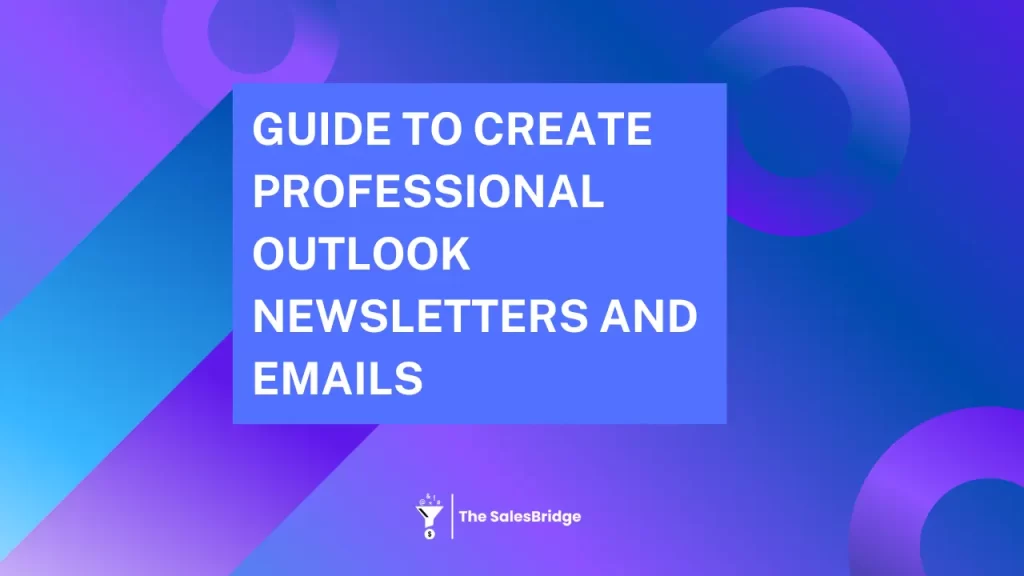Introduction
You’ve dedicated time and effort to creating valuable content, only for it to get lost in the crowded online space. Despite your hard work, your content goes unnoticed on your website.
As a b2b marketer wanting to scale quality lead generation and expand brand awareness, your top-notch content isn’t enough. The goldmine is getting the message in front of the right audience through the right channels at the right time. That’s where content syndication comes in.
With B2B content syndication, you can expand your reach to a wider audience and gain traffic. However, not all content is equally effective when distributed. You need to use the right content to get the most out of your content syndication efforts.
In this article, we’ll discuss all you need to know about content syndication and selecting the right content to drive your desired results.
What is Content Syndication?

Content syndication involves republishing your content — an article, a video, an infographic, etc. — on third-party platforms to reach a wider audience, amplify your content’s reach, and maximize its impact.
This depends on finding the right syndication service and partners to establish a mutually beneficial relationship and derive value from content distribution.
While different syndication partners may approach the republishing process in various ways—such as creating a shorter version or linking to the original piece with an excerpt—the overall goal remains to build brand awareness and credibility, especially for B2B marketers in a competitive marketplace.
How To Choose The Right B2B Content for Syndication?

It all starts with creating good content—high-quality content. Content that gives your readers value and answers their questions is the best content to distribute.
That’s why it’s essential to know who your audience is.
Think about your audience
Who are you trying to reach?
Having your audience in mind will help you share the right content that meets their specific needs, interests, and challenges. As a result, engage your target audience, increase traffic to your website, and generate valuable leads.
One way to understand your audience is by identifying your Ideal Customer Profile (ICP). This profile includes the company’s size, industry, purchasing behaviour, decision-makers, business challenges, goals, and objectives.
Not only do you develop better content when you understand your audience better, but you can use the data retrieved from your ICP to target the right audience for effective distribution.
Where are they in the funnel?
Your content’s performance varies based on your targeting at each stage of the marketing funnel. In the awareness stage, your audience is aware of their problem and seeking a solution.
Make sure to present your brand and ensure that they understand the solution you are providing. Content such as blogs, introductory videos, landing pages, and infographics are all suitable for this stage.
In the consideration phase, your audience seeks a solution and starts researching. You are trying to get the audience to consider you.
Some content options to use are eBooks and webinars. In the lower part of the funnel, is the decision-making phase. At this stage, your audience is close to making their purchase.
You’d want them to choose your product or service over the competition. Offering competitive analysis, buying guides and demos is one way to guide their decision-making process.
Content positioning
When creating B2B content for syndication purposes, educational content performs best in this context. It delivers value to the customer and is non-selling in nature.
Being too sales-oriented in your content undermines your authority in the industry as modern consumers and business decision-makers prefer informative, value-driven, educational content to overly promotional.
Once the leads are warm and ready to convert, then you can sell.
Additionally, how-to guides can help address current problems and build awareness of your organization’s expertise. These guides can target different stages of the funnel.
A buying guide is suitable for lower-funnel leads, while an introductory guide may be more effective for higher-funnel leads.
7 Types of Content Best Suited for B2B Syndication

Case Studies:
Case studies are powerful tools for content syndication, especially for targeting customers at the bottom of the funnel who are ready to purchase a product or service.
At this stage, potential customers are creating a shortlist to choose between you and your competitors. Providing real-life examples of how your product or services have successfully addressed specific challenges for clients can illustrate the impact your business can make.
For optimum effect, businesses should create compelling stories that highlight the client’s challenges, the solutions provided, and the results achieved.
Highlighting success stories helps build trust, credibility, and confidence in your product or service, making them highly compelling for potential customers. Also, Incorporating testimonials, data-driven insights, and visual elements further enhances their effectiveness.
Case studies can be syndicated on the business website, included in email campaigns, and distributed through social media platforms.
White Papers:
White papers are in-depth and authoritative reports that address specific industry problems.
They perform best in the consideration stage, where prospects review your brand and other alternatives. This kind of content is ideal for attracting decision-makers looking for detailed insights.
In creating an effective whitepaper, identify a topic relevant to your target audience, conduct thorough research, gather data, and analyze industry trends. The whitepaper should present a unique perspective, offer actionable insights, and provide practical solutions to the challenges faced by businesses in the industry.
Finally, promoting whitepapers through various channels such as email marketing, social media, and industry forums can help you generate leads as these mediums have a wider reach for organic traffic.
Ebooks:
Ebooks are comprehensive resources that cover a topic in detail and offer in-depth insights and practical advice.
This type of content is one way to showcase your expertise and present thought leadership content. One great thing about ebooks is that they are often targeted at specific pain points or industry challenges.
Due to that, potential leads that interact with the content exchange it for their contact information. The leads generated through this content prove more qualified to progress further down the buying journey, aligning perfectly with B2B marketing strategies, which often focus on nurturing leads over an extended sales cycle.
Industry Reports:
Industry reports are influential tools for guiding decision-makers in making strategic decisions and shaping industry trends. By highlighting opportunities, forecasting developments, and identifying challenges, these reports play a crucial role in positioning businesses as thought leaders in their industry.
Syndicating these reports amplifies their impact, spreading valuable insights across the industry and enhancing the influence and leadership of the companies creating and distributing them.
Webinars:
Webinars are a valuable tool for B2B businesses to engage with potential customers by demonstrating how effective their products or services are to their needs. They provide an interactive platform to connect with the audience and answer their questions at their consideration stage.
When planning a webinar, choose a relevant topic and create a well-structured presentation with compelling visuals and storytelling.
Webinars offer an opportunity to demonstrate expertise, build relationships with potential clients, and syndicate recorded sessions on professional networks and educational platforms for wider reach.
Long-Form Articles:
Long-form articles are a powerful tool for establishing your brand as an industry authority. These articles are comprehensive and informative, making them ideal for syndication.
For prospects in the awareness stage at the top of the sales funnel, these articles offer valuable insights into their challenges and needs. To build customer loyalty, your articles must be both engaging and informative.
When crafting long-form content, focus on delivering value by addressing questions prospects have about your industry. Keyword research is a vital first step in understanding what your audience is searching for. By conducting thorough keyword research, you can boost your brand’s visibility and attract more traffic to your site by securing top spots on search engine results pages.
Product Demos and Tutorials:
Product demos and tutorials serve as valuable content demonstrating how your products can effectively address specific challenges for potential customers. As a good practice, content like this are distributed where potential customers are researching solutions. With this kind of content, your potential leads are one way closer to a purchase.
Summing up
Your potential leads are always seeking solutions to their challenges. By providing valuable, relevant content that aligns with their needs and interests, you can increase traffic flow to your site and brand visibility. Whether you’re sharing case studies, white papers, or webinars, choose wisely the content for syndication to help you generate leads and increase your business growth.






